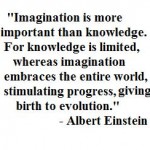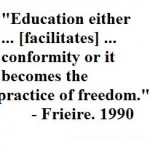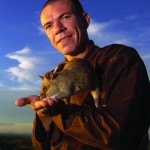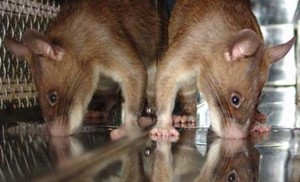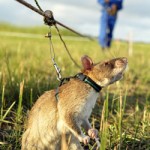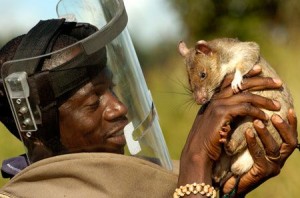For my blog, I wanted to share with you some of Ken Robinson’s views on how education kills children’s creativity.
We all know how important it is to get an education. After all, we are raised to believe that we will not obtain a job without one. Our every step seems to be already planned out: first, go to school and then begin a career. But we do not know what the future will bring. Then why should we plan for the next 40+ years of our lives when realistically we do not know how the world will look in five years?
Schools are teaching children to meet the future by what they did in the past. Mathematics, languages, and humanities were considered more important than the arts. However, this method is not practical anymore, for the world has drastically changed. The arts such as music, theatre, and dance now rival the once important subjects. Also, in the past kids went to school because they knew they would get a job afterwards. But nowadays, kids do not believe that they will secure a job once they finish high school or university. This is largely due to the struggling economy and thus observing how unemployment rates have sky rocketed. Therefore, what is the point of going to school if the probability of getting a job is not very high?
Robinson defines creativity as the original ideas that have value. What happened to adults’ creativity? The saying “making mistakes helps you learn” seems to be lost in adults. This is because today’s society penalizes people’s mistakes so harshly that adults are afraid to be wrong. And as a result their pure sense of creativity is lost. On the other hand, have you noticed what a child does when they are uncertain the answer? They will say something, anything that they believe to be correct. They are not afraid to take chances.
At birth, every parent has big dreams for their child. For example, they may want their child to achieve the highest academic standing in school. However, they fail to realize that children are naturally very creative and innovative. If a child is struggling in school, many parents think that they have a medical problem. For example, many of these children are diagnosed with Attention Deficit Hyperactivity Disorder (ADHD). Often times, they are required to take potentially harmful medications like Adderall and Ritalin to help them focus and calm down. But is this the solution? Is it their fault for being so distracted? Probably not. Children are surrounded by a flood of exciting things to do, like watching TV, going on the computer, or playing with iPhones; as such, to them, the subjects they learn at school are boring and pointless. And yet society is still penalizing children for getting distracted during school. Instead they should be reworking how the curriculum is taught. These medications deaden children’s senses, making them unable to fully be themselves; thus their creativity is being killed.
In addition, the structure of the education system restricts the potential of some children. For example, children learn in a variety of ways. Younger children may be smarter than older children, yet they are strictly placed into grades based on their age. Also, some children learn better at night than in the morning, and some children learn better on their own as opposed to working in groups. Our education system requires a strong level of conformity from children. Furthermore, children spend ten years in school programmed to think that there is just one answer to a problem. They steadily lose the ability to think outside the box. 
Whether it is trying to find a quick fix for a distraction problem or the basic structure of how schools are run, children are not getting the individual attention they require. Robinson says that it is time for us to “…[see] our creative capacities for the richness they are and [see] our children for the hope that they are.”
You Tube Video:
How Can We Nurture Creativity In Educational Contexts?
Reference:
Robinson, K. (2006). Do schools kill creativity? Retrieved November 2, 2011, from
